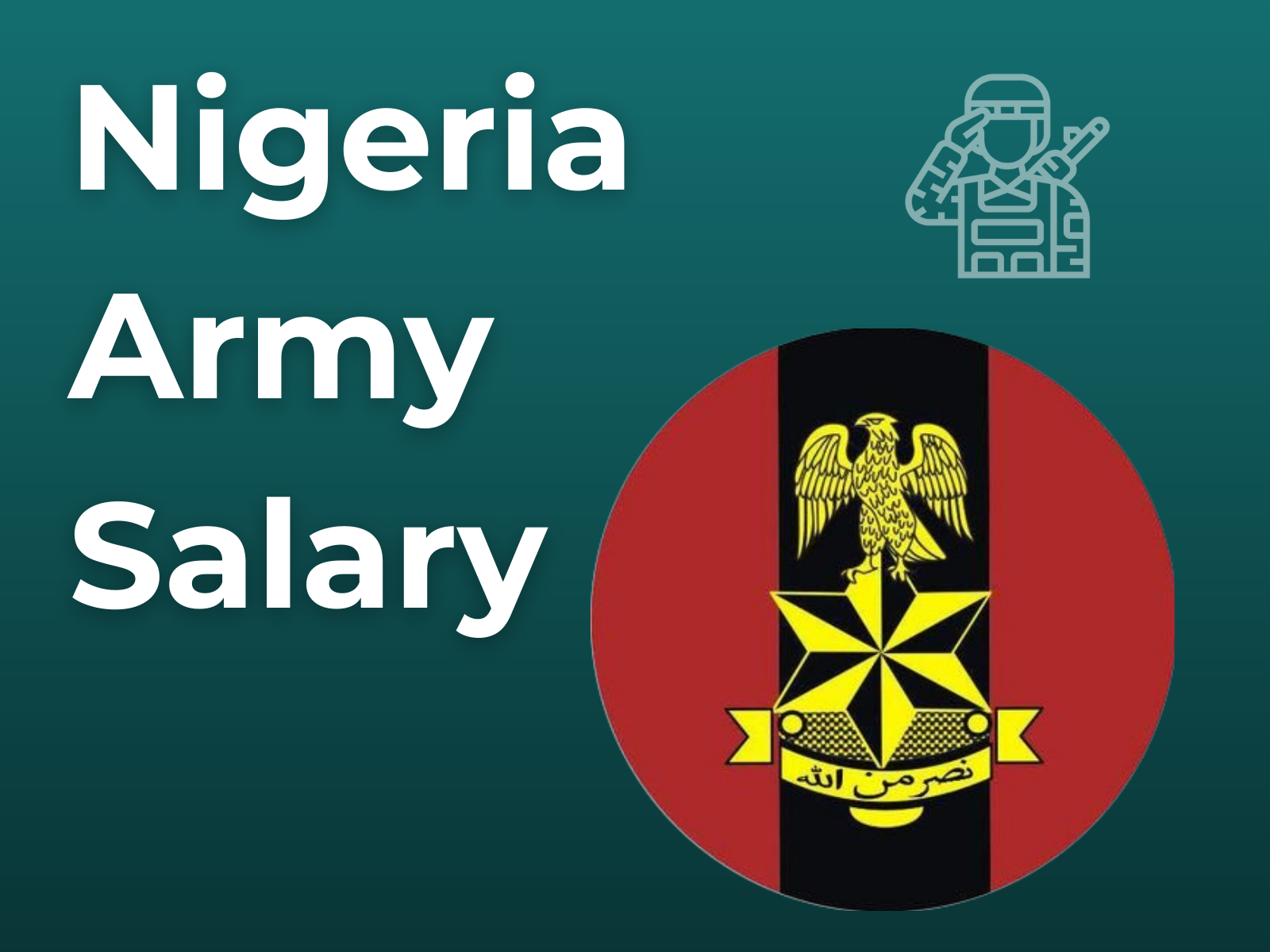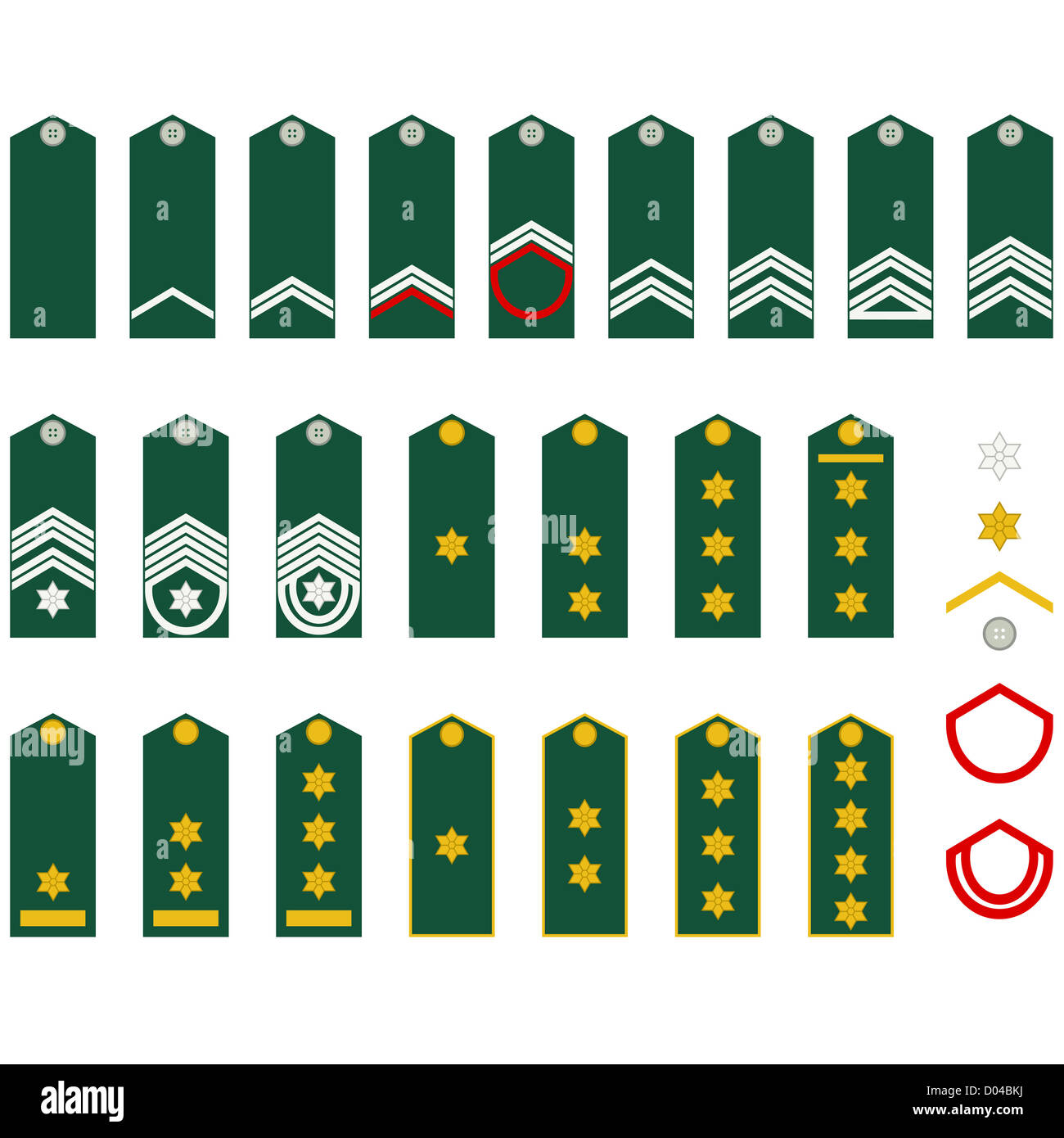Ranks In The Nigerian Army: A Comprehensive Guide To Understanding The Structure
When it comes to understanding the ranks in the Nigerian Army, you’re about to dive into a world that’s as fascinating as it is structured. The Nigerian Army is not just another military force—it’s a well-oiled machine with a hierarchy that plays a crucial role in maintaining order and executing missions. If you’ve ever wondered how the ranks are organized, what they mean, and why they matter, you’re in the right place. Let’s get started, shall we?
Picture this: you’re standing at a military parade, watching officers and soldiers march with precision. Ever wondered who’s in charge? Who calls the shots? Understanding the ranks in the Nigerian Army is like unlocking a secret code that explains how everything fits together. From the top brass to the foot soldiers, every rank has its own significance.
Whether you’re a history buff, a student, or someone curious about military structure, this guide will break it down for you. We’ll explore the ranks, their responsibilities, and how they contribute to the overall mission of the Nigerian Army. So, grab a cup of coffee, sit back, and let’s unravel the mystery of ranks in the Nigerian Army.
Here’s the deal: the Nigerian Army’s hierarchy is more than just a list of titles. It’s a system designed to ensure efficiency, discipline, and leadership. Stick around, and we’ll walk you through everything you need to know.
Table of Contents
- The History of Ranks in the Nigerian Army
- Understanding the Structure of the Nigerian Army
- Officer Ranks in the Nigerian Army
- Enlisted Ranks in the Nigerian Army
- How Promotions Work in the Nigerian Army
- Rank Insignia and Uniforms
- Responsibilities of Each Rank
- Challenges Faced by the Nigerian Army Ranks
- Modernization of the Nigerian Army Ranks
- Conclusion: Why Understanding Ranks Matters
The History of Ranks in the Nigerian Army
Before we dive into the ranks themselves, let’s take a trip back in time. The Nigerian Army, like many other military forces, has its roots in colonial history. When the British established their presence in Nigeria, they brought with them a military structure that eventually evolved into what we know today.
Back in the day, the ranks were heavily influenced by British military traditions. Over time, however, the Nigerian Army developed its own unique system that reflects the country’s culture and needs. This evolution wasn’t just about changing names; it was about adapting to the challenges faced by the nation.
- Spiderman Video Sophie Unveiling The Web Of Fun And Adventure
- Is Kardea Brown Married Discover The Truth Behind Her Love Life
Here’s the kicker: understanding the history of ranks helps us appreciate how far the Nigerian Army has come. From colonial roots to a modern, independent force, the journey has been nothing short of remarkable.
Understanding the Structure of the Nigerian Army
Now, let’s talk structure. The Nigerian Army is divided into two main categories: officers and enlisted personnel. Think of officers as the brains of the operation, while enlisted personnel are the backbone. Both groups work together to achieve the army’s goals.
Here’s a quick breakdown:
- Officers: These are the leaders who make decisions and oversee operations.
- Enlisted Personnel: These are the soldiers who carry out the orders and perform the tasks.
Each category has its own set of ranks, which we’ll explore in detail later. But for now, just remember that the structure is designed to ensure that everyone knows their role and responsibilities.
Why Structure Matters
Structure is not just about hierarchy; it’s about efficiency. Imagine trying to run an army without clear roles and responsibilities—it would be chaos. The ranks in the Nigerian Army provide a framework that ensures everyone knows what they’re supposed to do.
Officer Ranks in the Nigerian Army
Alright, let’s talk officers. These are the folks who lead the charge, make the big decisions, and set the tone for the entire operation. Officer ranks in the Nigerian Army are divided into several levels, each with its own responsibilities.
General Officers
At the top of the pyramid, you’ve got the general officers. These are the big dogs who oversee entire divisions and operations. Think of them as the CEOs of the military world.
- Field Marshal: The highest rank, though rarely used.
- General: Commands entire armies or large-scale operations.
- Lieutenant General: Oversees divisions and large units.
Senior Officers
Next up, we’ve got the senior officers. These guys are like the middle management of the military—they bridge the gap between the generals and the lower ranks.
- Brigadier General: Commands brigades and smaller units.
- Colonel: Oversees battalions and ensures operations run smoothly.
Enlisted Ranks in the Nigerian Army
Now, let’s shift our focus to the enlisted personnel. These are the soldiers who do the heavy lifting, carrying out the orders and executing the missions. Enlisted ranks are just as important as officer ranks—they’re the backbone of the army.
Non-Commissioned Officers (NCOs)
NCOs are the bridge between officers and enlisted personnel. They provide leadership and guidance to the lower ranks while carrying out orders from above.
- Sergeant Major: The highest-ranking NCO, often seen as the voice of the troops.
- Warrant Officer: Acts as a liaison between officers and enlisted personnel.
- Sergeant: Oversees squads and ensures discipline.
Junior Enlisted Personnel
At the bottom of the pyramid, you’ve got the junior enlisted personnel. These are the soldiers who are just starting out, learning the ropes, and gaining experience.
- Corporal: A junior leader who assists sergeants.
- Private: The entry-level rank for new recruits.
How Promotions Work in the Nigerian Army
Promotions in the Nigerian Army are not just about seniority; they’re about merit. Soldiers and officers are evaluated based on their performance, leadership qualities, and contributions to the mission.
Here’s how it works:
- Merit-Based: Promotions are awarded to those who excel in their roles.
- Training: Continued education and training are essential for advancement.
- Leadership: Demonstrating leadership skills is crucial for moving up the ranks.
It’s not just about climbing the ladder—it’s about becoming a better leader and contributor to the army’s mission.
Rank Insignia and Uniforms
Let’s talk swag. Every rank in the Nigerian Army has its own insignia and uniform. These symbols and uniforms aren’t just for show—they serve a practical purpose by identifying each soldier’s rank and role.
Here’s a quick rundown:
- Stars: Used to denote general officers.
- Stripes: Common for NCOs and enlisted personnel.
- Badges: Special insignia for specific roles or achievements.
So, the next time you see a soldier in uniform, you’ll know exactly what their rank and role are just by looking at their insignia.
Responsibilities of Each Rank
Every rank in the Nigerian Army comes with its own set of responsibilities. From the Field Marshal down to the Private, each soldier has a role to play in the overall mission.
General Officers
These are the big thinkers. They’re responsible for strategic planning and decision-making. Think of them as the architects of the army’s operations.
Enlisted Personnel
On the other end of the spectrum, you’ve got the enlisted personnel. Their responsibilities include executing orders, maintaining equipment, and ensuring discipline within their units.
Challenges Faced by the Nigerian Army Ranks
No system is perfect, and the Nigerian Army is no exception. Challenges such as funding, equipment, and training can affect the effectiveness of the ranks. However, the army continues to adapt and overcome these obstacles.
Here’s how:
- Modernization: Investing in new technology and training methods.
- Collaboration: Working with international partners to enhance capabilities.
- Leadership Development: Focusing on developing strong leaders at all levels.
Modernization of the Nigerian Army Ranks
The Nigerian Army is not resting on its laurels. In fact, it’s actively modernizing its ranks to meet the challenges of the 21st century. This includes upgrading equipment, improving training programs, and embracing new technologies.
Here’s what’s happening:
- Technology: Incorporating drones and other advanced systems.
- Training: Focusing on cyber warfare and other modern threats.
- Collaboration: Partnering with other nations to share knowledge and resources.
Conclusion: Why Understanding Ranks Matters
So, there you have it—a comprehensive guide to understanding the ranks in the Nigerian Army. From the history and structure to the responsibilities and challenges, we’ve covered it all. Understanding the ranks is more than just knowing titles; it’s about appreciating the complexity and importance of the Nigerian Army’s hierarchy.
Here’s the bottom line: the ranks in the Nigerian Army are a testament to the country’s commitment to maintaining a strong, disciplined, and effective military force. Whether you’re a history buff, a student, or just someone curious about military structure, this guide has hopefully given you a deeper understanding of how it all works.
Now, it’s your turn. Leave a comment below and let us know what you think. Share this article with your friends and family, and don’t forget to check out our other articles for more insights into the world of military structure. Thanks for reading, and we’ll see you in the next one!
- Did Kat Timpf Get A Boob Job Unpacking The Rumors And The Truth
- Jan Schiltmeijer The Unsung Hero Of Digital Innovation

Nigerian Army Ranks Salary Website Logo Headquarters vrogue.co

Nigerian Army Ranks and Salary Structure 2025 InfoNaijaHub

Nigerian Army Ranks Badges Picture